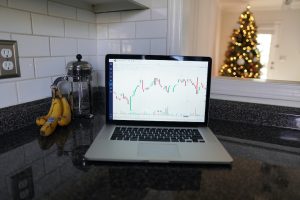Forex trading is a highly volatile and unpredictable market. As a trader, predicting the future direction of the market is essential to making profitable trades. However, predicting the forex market direction is not an easy task, and it requires a lot of experience, knowledge, and analysis. In this article, we will discuss some of the ways you can predict the forex market direction.
1. Fundamental Analysis
Fundamental analysis is the study of economic indicators and news events that affect the forex market. The economic indicators include gross domestic product (GDP), inflation rate, interest rates, employment figures, and trade balance. News events that affect the forex market include political events, natural disasters, and geopolitical tensions.
When analyzing the forex market direction using fundamental analysis, you need to keep track of the economic calendar to know when the important economic indicators and news events are going to be released. You should also analyze the impact of these indicators and news events on the currency pairs you are trading.
For example, if the GDP figures of a country are better than expected, the currency of that country is likely to appreciate. Conversely, if the inflation rate of a country is higher than expected, the currency of that country is likely to depreciate.
2. Technical Analysis
Technical analysis is the study of past price movements of a currency pair to predict future price movements. Technical analysis involves the use of charts and technical indicators.
When analyzing the forex market direction using technical analysis, you need to identify the support and resistance levels of the currency pair you are trading. The support level is the price level where the currency pair is likely to bounce back after a decline, while the resistance level is the price level where the currency pair is likely to face selling pressure.
You should also analyze the trend of the currency pair. If the currency pair is in an uptrend, you should look for buying opportunities, while if the currency pair is in a downtrend, you should look for selling opportunities.
Technical indicators such as moving averages, stochastic, and relative strength index (RSI) can also be used to predict the forex market direction. These indicators help you identify the overbought and oversold conditions of a currency pair.
3. Sentiment Analysis
Sentiment analysis is the study of the mood of the market participants, which includes traders, investors, and institutions. Sentiment analysis involves the use of news sentiment indicators, social media sentiment indicators, and trading volume.
When analyzing the forex market direction using sentiment analysis, you need to identify the market sentiment. If the majority of the market participants are bullish on a currency pair, the price of the currency pair is likely to appreciate. Conversely, if the majority of the market participants are bearish on a currency pair, the price of the currency pair is likely to depreciate.
News sentiment indicators and social media sentiment indicators can be used to gauge the market sentiment. Moreover, trading volume is also an important indicator of market sentiment. High trading volume indicates strong bullish or bearish sentiment.
4. Intermarket Analysis
Intermarket analysis is the study of the relationships between different markets, including the forex market, stock market, commodity market, and bond market. Intermarket analysis involves the use of correlation analysis and relative strength analysis.
When analyzing the forex market direction using intermarket analysis, you need to identify the correlations between different markets. For example, if the stock market is in an uptrend, the currency of that country is likely to appreciate. Conversely, if the commodity market is in a downtrend, the currency of that country is likely to depreciate.
Relative strength analysis involves the comparison of the performance of different markets. For example, if the stock market is outperforming the forex market, it is likely to attract more investment, which will lead to the appreciation of the currency of that country.
Conclusion
Predicting the forex market direction is not an easy task, and it requires a lot of experience, knowledge, and analysis. However, by using fundamental analysis, technical analysis, sentiment analysis, and intermarket analysis, you can increase your chances of making profitable trades. It is important to note that no single method of analysis can guarantee success in forex trading. Therefore, it is recommended to use a combination of different methods to make informed trading decisions.





